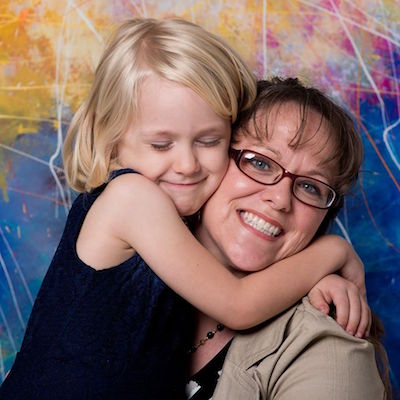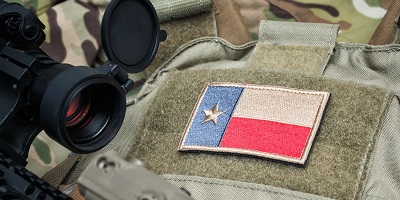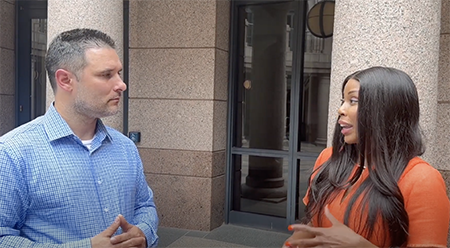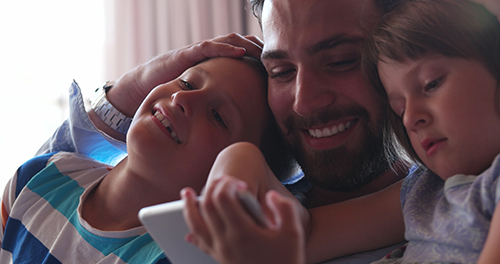Conservative Christian Mother of Transgender Daughter Discusses Privacy and Modesty in Schools
 My daughter Kai is six years old. She also happens to be transgender. (As a lifelong Conservative Christian, this turn in the road came as a huge surprise, and you can read more about that here.)
My daughter Kai is six years old. She also happens to be transgender. (As a lifelong Conservative Christian, this turn in the road came as a huge surprise, and you can read more about that here.)
I’ve spent a lot of time this past year listening to how Texas leaders describe transgender children, and one of the areas they seem to focus on is what happens in the locker room. Words like “modesty” and “privacy” are used a lot – the insinuation is that other girls will somehow be harmed by using the same locker room as my daughter.
I can’t believe I am already thinking about this, because Kai is still in kindergarten. But I have older kids, and I know how quickly the years will pass. Before I know it, she’ll be in middle school, then high school. Those locker rooms are coming.
So I decided to educate myself. What really happens when transgender preteens and teenagers are allowed to use the school locker room alongside their peers?
Here’s what I know:
1. No kid announces that she’s transgender, then starts using girls’ bathrooms and locker rooms the next day.
This process is something that the child and parents wrestle with for years. It happens when a child has been “insistent, consistent, and persistent” about their gender identity for a long period of time – just like Kai. Counselors and doctors are often involved. And one thing I recently learned: If a school administrator has doubts about a child’s sincerity, they can request documentation of the child’s transgender identity from medical providers.
2. There is no one-size-fits-all for transgender kids.
Not all transgender children want or need the same thing when it comes to bathrooms and locker rooms. Some prefer single-user facilities. Other transgender children feel those accommodations isolate and single them out for bullying, and prefer to use facilities alongside peers.
3. Schools are REALLY involved in these decisions.
Parents, school staff, counselors, and the transgender child communicate regularly as the child prepares to “socially transition” (that means name, pronouns, and appearance) at school. Together, they discuss accommodations on a case-by-case basis. Educators always consider the well-being of all of the children in the school.
4. Kids are modest. Transgender kids are usually even more modest.
Most kids describe school locker rooms as an awkward place where everyone is just trying to get in and out as quickly as possible. Regardless of gender identity, some kids change in restroom stalls, while others hold up towels to change behind. It’s fast and no one is showing private parts to anyone else. My experience is that transgender kids have a very strong tendency toward modesty. Transitioning is already difficult; transgender kids don’t want to make it more difficult by being exposed to prying eyes.
5. Boys can’t just claim they’re girls to get access to girls’ spaces.
This is simply not how it works. No child can claim to be transgender to get access to a locker room or bathroom - and as is already the case, anyone entering a private space without permission would be subject to the appropriate disciplinary measures.
6. Transgender children can’t just use the facilities consistent with their birth certificates
There are a few reasons for this:
- I cannot imagine anyone being comfortable with my girly girl Kai, in pink and sparkles, using a middle or high school boys’ locker room.
- The hormone therapies that many teenage transgender kids undergo (under medical supervision) have real impacts: teenagers undergoing this treatment will present physical characteristics like facial hair, deepened voices, and broadened shoulders for transgender boys, and development of breasts and hips for transgender girls.
- And please don’t tell me to just update my kid’s birth certificate. It’s difficult, expensive, and often just plain impossible for a child to get a new gender marker on a birth certificate in Texas.
7. Offering a nurse’s bathroom to transgender children is just wrong.
Kai is only six, and I already see what it does to her when she is treated differently. Anyway, in many schools – especially bigger middle and high schools – such segregated facilities can be a long way away from a kid’s classroom. This distance can lead to the child avoiding food and drinks and “holding it” all day, which in turn can create anxiety and health problems. Unless it is specifically desired and requested by the child, segregation does not treat the child as normal and welcome.
8. Letting transgender kids use locker rooms doesn’t help predators.
What’s stopping predators from entering school locker rooms is what has always been in place to stop them: existing laws, plus the watchful eyes of school administrators, teachers, and security personnel. Predatory behavior, voyeurism, and assault are already illegal. Treating transgender kids like normal kids doesn’t change the equation.
9. Non-transgender children have a voice, too.
Educators take the needs of all children seriously. Many schools offer any child, regardless of gender identity, options for changing in privacy.
I want to make this clear: there is no moral or legal basis to assuming my child is a danger to others simply because of who she is. I expect her to treat people with respect and kindness, and as long as she does that, I don’t believe people have the right to treat her differently.
My Conservative values tell me to leave well enough alone, and to let people get on with their business. My Christian values tell me to treat everyone with love, and to accept people from all walks of life. Learning from my transgender daughter, and the transgender kids and teens I’ve gotten to know, only reinforces those beliefs.







